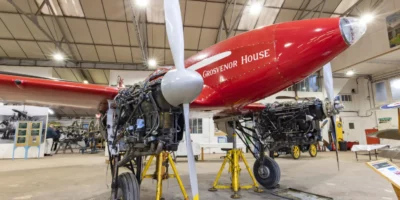The news at the moment is a bit grim, so planning for the future – especially for non-essential stuff like General Aviation – tends either to be put on hold, or made with a conservative mindset. You’re unlikely to buy that new Rotax-powered speedster if future employment isn’t guaranteed. That said, it’s times like the present when large companies are in a position to focus on the future, and look good when it arrives. In a world judged by Twitter, jam tomorrow takes business balls, which is why we have the politics we do…
Enough of that, let’s welcome aviation giant Rolls-Royce’s announcement of its PGS1, which is ‘a hybrid-electric aero power and propulsion system that has delivered more than a megawatt of power just weeks after going on test for the first time’. Great, and there’s the promise of 2.5 megawatts to come as testing progresses.
“Our generator is about the size of a beer keg…” says the release, “…yet it has already produced enough electricity to continuously power around 1,000 homes – that is really taking technology to new levels. When future hybrid-electric aircraft opportunities emerge in the megawatt and above class we want to be as prepared as we can be to offer a ready-made solution.”
Now, having mentioned the reluctance of companies to focus on the future when all around is gloom and doom, it might seem churlish to point out that the PGS1 is based on the engine used times four in the C130 transport. Each produces 4,300hp, which by my calculation is 3.5MW. So unless I have that completely wrong, for aviation use, it would be easier and just as green to refit the propeller. Equally churlish perhaps to point out that Rolls-Royce has been a tad late to the hybrid party, but has been very good at garnering government grants when they become available. You can’t blame R-R for that, it’s its job, or one of its department’s jobs, to grab as much cash as is available.
“It’s a mystery to me why more effort has not been put into the use of hydrogen”
Meanwhile, there are several Small or Medium Enterprises which have been trying to develop meaningful and green aviation powerplants for some time, all with good credentials, but in this country most have been hampered by a complete lack of governmental interest, or more to the point, governmental cash.
One of their CEOs wearily explained the lobbying process: “… you wait your turn to present your pitch to a minister, knowing full well that the R-R guy will make sure he goes last, and with a simple message. ‘Yes, those people you’ve just seen probably have some good ideas, but they’re not proven. Do you want to take the risk, or do you want to go with Rolls-Royce…’”
Rolls-Royce has also been in the news with a proposal to site one of its Small Modular Nuclear Reactors – the kind made by R-R to generate steam for the Royal Navy’s underwater fleet – in a power station in Wales (at Trawsfynydd, on the edge of Snowdonia National Park, in case you thought I was making this up) capable of generating 300MW of power. The first nuclear-powered submarine, USS Nautilus, put to sea in 1955, so the technology is mature and ground-based SMR technology is currently undergoing trials across the world, even in front of regulators in America right now. Also great, but we should not be using it to charge lithium batteries in a car.
As I may have mentioned before, batteries using rare and toxic materials which have to be mined and then charged from the mains, are not the answer. Most people with even a casual interest can see that, but governments around the world are determined to plunge headlong into a blind alley, or more to the point, oblige manufacturers to do it for them. It’s a mystery to me why more effort has not been put into the use of hydrogen, which to my mind is the propulsive answer we need for cars, boats and aeroplanes.
Hydrogen is the world’s most plentiful element and it can be used to produce electricity directly from a hydrogen fuel cell (technology invented by Englishman Sir William Grove in 1838), or it is possible to feed a conventional piston engine, a similar process to that required to adapt a car to LPG. That’s less straightforward and you still have to store the hydrogen on board, but that’s what Toyota, or VW or Ford are good at. They won’t, if government doesn’t make them… Having got back finally to aviation (it’s at the end of the paragraph above), step forward ZeroAvia…
They’re American but have a base at Kemble, and in 2020 they flew a hydrogen fuel cell-powered Piper Malibu (G-HYZA, geddit…) to make the largest hydrogen-electric powered aircraft flight to date. That was followed by a £12.3m grant from the UK Government (hooray for that…) to develop propulsion for a 19-seat commuter aircraft. In December this year, ZeroAvia added $35 million courtesy of United Airlines and Alaska Air Group, to make a total of $115 million in the pot. It includes an outline agreement to purchase 100 engines, meanwhile, ZeroAvia is working on a Dornier 228 powered by two of its ZA-600 power units, slated for a London-Rotterdam route in 2024. Just quietly, some people are getting on with it…
Working vintage aircraft and cars make Mark particularly happy
[email protected]







